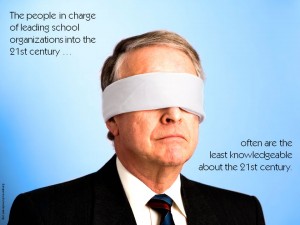For quite some time, the Digital Divide has been a term describing the existing gap between the “Haves” and “Have-Nots” — pertaining to access to technology. Essentially, the Digital Divide classifies people all over the world into two classes: those who have access to and know how to use digital technologies, and those who don’t (to read more, go to the Digital Divide Network).
The more I work with kids, however, I feel there are really three classes that need our attention:
Class I: this is the class of students who have digital access, at school and maybe at home– who are creators, producers, problem-solvers, etc., who have been given the opportunity to work with educators in digital environments. They have had guidance concerning how to use these tools responsibly (from educators and parents); and at some level, this class of students understands the implications of what they create and publish for the world to see. These students work in digital environments in and outside of the classroom and view their digital experiences as learning, socializing, and global responsibility opportunities. In some cases, these students also will have had an opportunity to learn about a healthy balance of “plugged in” time vs. “unplugged.”
Class II: these students also have access to digital environments, but have had less guidance from adults as to best digital practices. In their schools, their personal digital devices (e.g., cell phones, mp3 players) are usually banned, and computer use and web access is most often viewed as a reward rather than the norm. Academically speaking, this class of students will use web resources for research, but are usually digitally unaware of validity and reliability of said resources. There is little to no guidance for this class of students, either at school or at home, about what is acceptable, appropriate, and responsible behavior on the web. Their view of digital environments is generally limited to socializing opportunities… envision a social networking page with multiple inappropriate comments, photos, and videos. These students tend to stay “plugged in” more than their Class I counterparts. Although this class of students has digital access, these students probably will not have the advantages and preparation for post-secondary education and adult life that the Class I students will have.
Class III: these students do not have digital access at home. If their schools do not provide the proper balance, these students are often cheated of digital experiences entirely. In schools where technology is viewed as an extra or as a privilege, many of these students fall behind at extraordinary rates. They do not create, publish, produce, or problem-solve in digital environments, and they are usually relegated to the state of consumer in the classroom. Higher-level thinking skills are only nurtured within this group by outstanding classroom teachers; however, without the digital experiences, this group is so far behind the Class I students, they may face an unsurmountable disadvantage as adults in the 21st Century.
This post is not promoting an initiative for all schools to add a 1:1 laptop ratio into every classroom, assuming that a laptop is the panacea for the Digital Divide. Nor is it an assumption that students can’t learn higher level thinking skills without technology. Think, however, about the following examples:
Jack: has access in school and at home, has a web-enabled cell phone he is allowed to use to find answers and to communicate with the world around him, has parents who set reasonable limits for the time he spends “plugged in” and have guided him about responsible behavior. Jack creates his own podcasts about how to use digital video editing software, writes his own blog about the upcoming US elections, and creates public service announcement videos for teens that may be seen on YouTube and sometimes even local television stations.
Brittany: covertly text messages her friends during classes at school- where cell phones are banned, populates her MySpace page with provocative photos of herself and her friends, chats with strangers online and pretends she is much older than she truly is, publishes her cell phone number and home address on all her social networking sites, and writes a research-based paper for her science class on global warming using only the first five returns on Google. Brittany has no limitations on how much time she spends “plugged in.”
Delanie: Delanie does not have a cell phone or a computer at home with internet access. The only time she has any digital experiences is when her classroom teacher takes the entire class to the computer lab. There are some computers in her classroom, but she has a more difficult time in school than her peers and it takes her longer to finish classwork. The computer in this classroom is a privilege and may be used only after worksheets are completed and turned in to the teacher… with no mistakes. Delanie has no idea about the world of blogs, wikis, podcasts, etc., except for what she hears other kids talk about.
Do you know students like Jake, Brittany, and Delanie? Would it surprise you to know that, even though I changed their names, these examples are students I actually know?
How would you classify your own students? What can you do to help bridge their Digital Divide?


